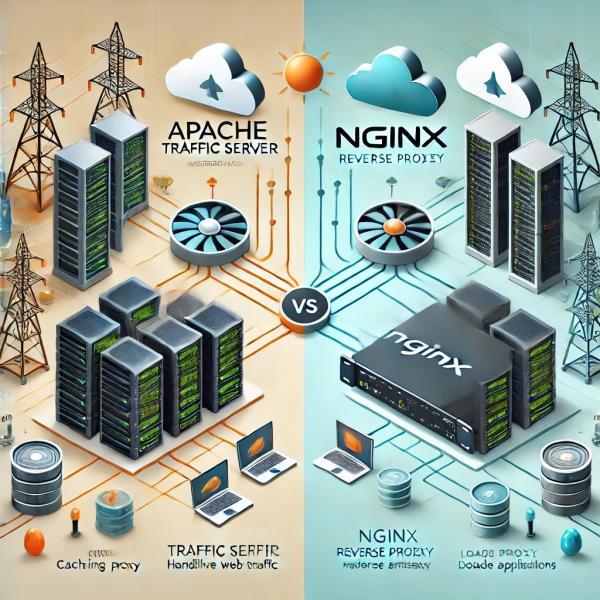Apache Traffic Server vs. Nginx: Which One is Right for Your Needs?
- English
- 17 Feb,2025

In the world of web servers and proxy solutions, Apache Traffic Server (ATS) and Nginx are two of the most popular choices. While both handle high web traffic efficiently, they serve different purposes. This article explores the differences between the two, helping businesses and developers make the right choice.
1. Performance & Scalability: Speed vs. Efficiency
Apache Traffic Server is designed for large-scale caching and proxying, making it ideal for high-traffic environments. Originally developed by Yahoo, ATS efficiently manages millions of concurrent connections and excels in high-speed HTTP proxying.
On the other hand, Nginx is well known for its event-driven architecture, allowing it to handle thousands of requests per second while using minimal memory. It is an excellent choice for web hosting and API management, providing fast request processing and superior load balancing.
Winner: Depends on Use Case
- ATS for high-scale caching and proxying
- Nginx for web hosting and efficient request handling
2. Caching Capabilities: ATS Dominates
One of Apache Traffic Server's standout features is its advanced caching system, which rivals dedicated caching solutions like Varnish. It supports granular cache purging and serves as a CDN-grade caching proxy.
Nginx, while capable of caching, offers basic caching features through proxy_cache, which are sufficient for small-scale deployments but lack the power and flexibility of ATS.
Winner: Apache Traffic Server
- ATS for advanced, high-performance caching
- Nginx for basic caching in reverse proxy setups
3. Reverse Proxy & Load Balancing: Nginx Excels
Both ATS and Nginx can function as reverse proxies, but Nginx provides better built-in load balancing features such as:
✔ Round-robin
✔ Least connections
✔ IP-hash balancing
ATS, while capable of proxying, requires more configuration and lacks Nginx’s built-in load balancing flexibility.
Winner: Nginx
- Nginx for reverse proxy with load balancing
- ATS for pure proxying and caching
4. Security Features: Who Provides Better Protection?
Security is crucial in high-traffic applications. Nginx offers rate limiting, DDoS mitigation, and strong SSL termination support, making it an excellent choice for secure reverse proxying.
ATS, being a caching proxy, focuses more on traffic management than direct security. However, it can be hardened using external modules like ModSecurity.
Winner: Nginx
- Nginx for better security and SSL support
- ATS for large-scale traffic routing with external security modules
5. Ease of Use & Configuration: Simplicity vs. Complexity
Nginx is widely praised for its simple configuration and setup, making it a developer-friendly choice for web hosting and proxying.
Apache Traffic Server, while powerful, has a steeper learning curve and requires more fine-tuning to get the most out of it.
Winner: Nginx
- Nginx for easy configuration and fast deployment
- ATS for enterprise-level caching with advanced setup
6. When to Choose ATS or Nginx?
Use Case Best Choice
- Web hosting (static/dynamic sites): Nginx ✅
- CDN and large-scale caching: ATS ✅
- Reverse proxy with SSL & security: Nginx ✅
- Load balancing Nginx: ✅
- Massive traffic handling & proxying: ATS ✅
- API Gateway: Nginx ✅
Final Verdict: The Right Tool for the Right Job
The choice between Apache Traffic Server and Nginx depends on your needs:
✔ Use ATS if you require high-speed caching, CDN-level performance, and advanced traffic proxying.
✔ Use Nginx for web hosting, API management, reverse proxying, and load balancing.
Ultimately, businesses that require scalable caching will benefit from ATS, while Nginx remains the go-to choice for web servers and load balancing.
Which one are you using? Let us know in the comments! 🚀
Posted By:
 Gurjeet Singh
Gurjeet Singh
